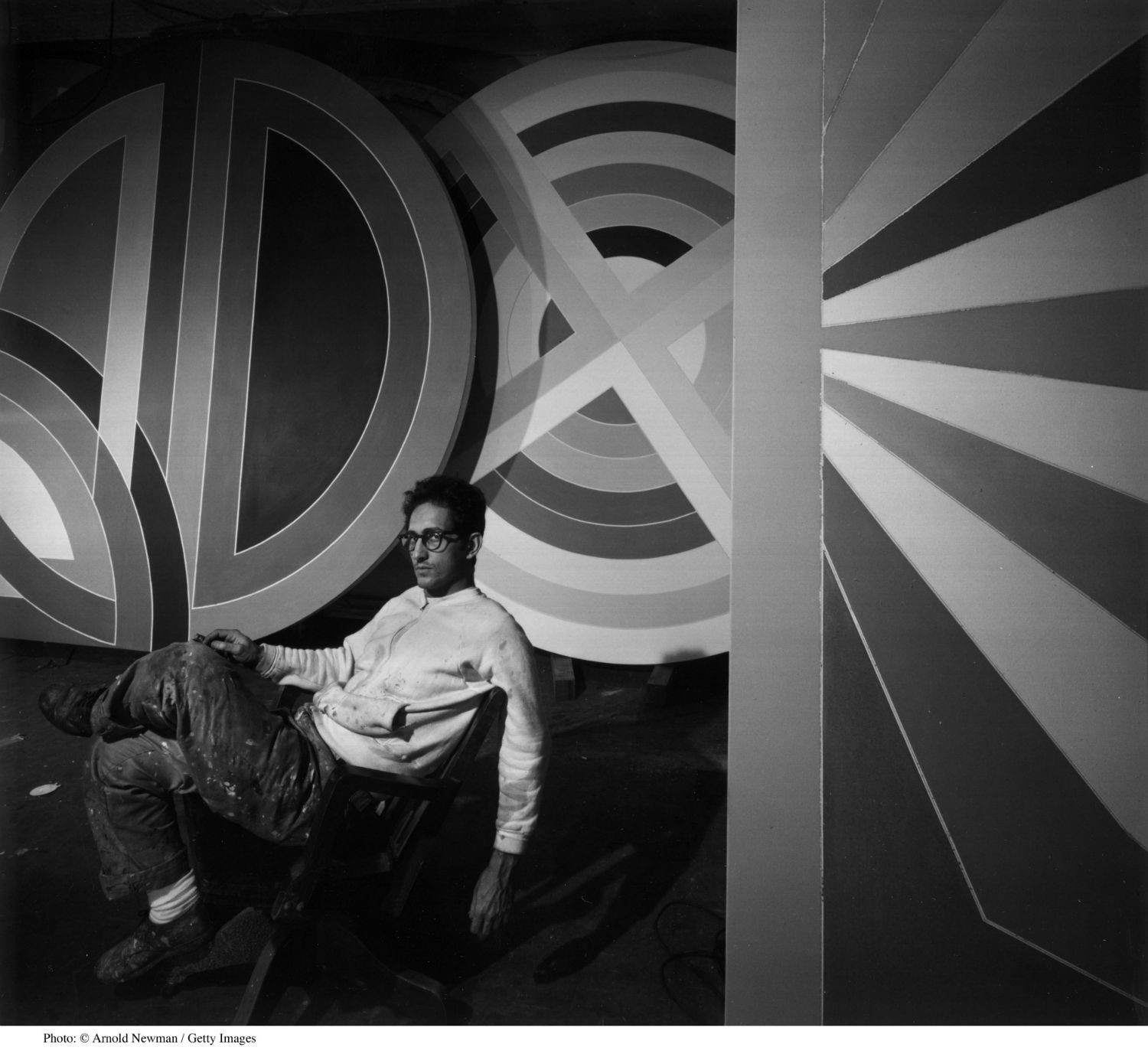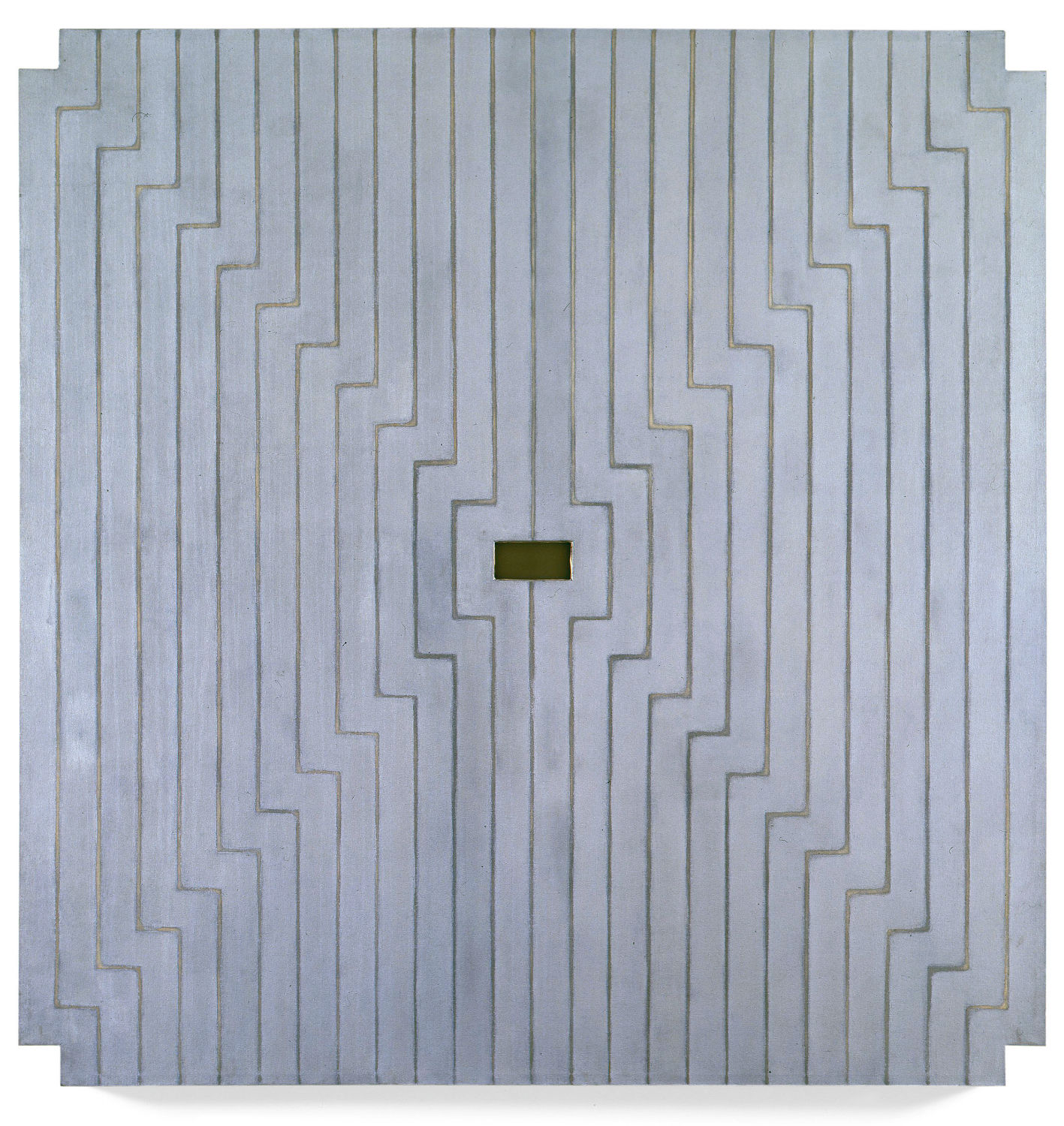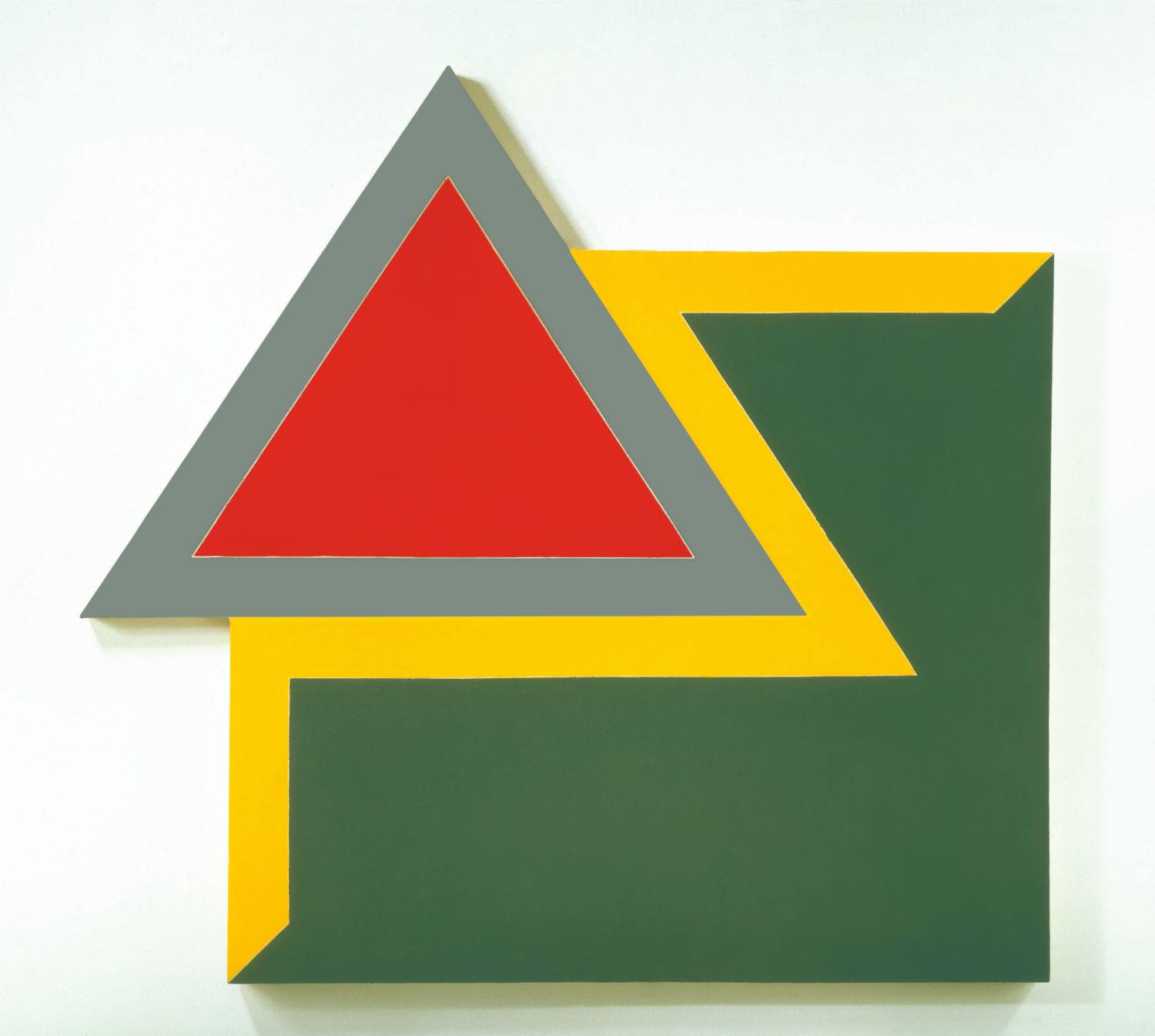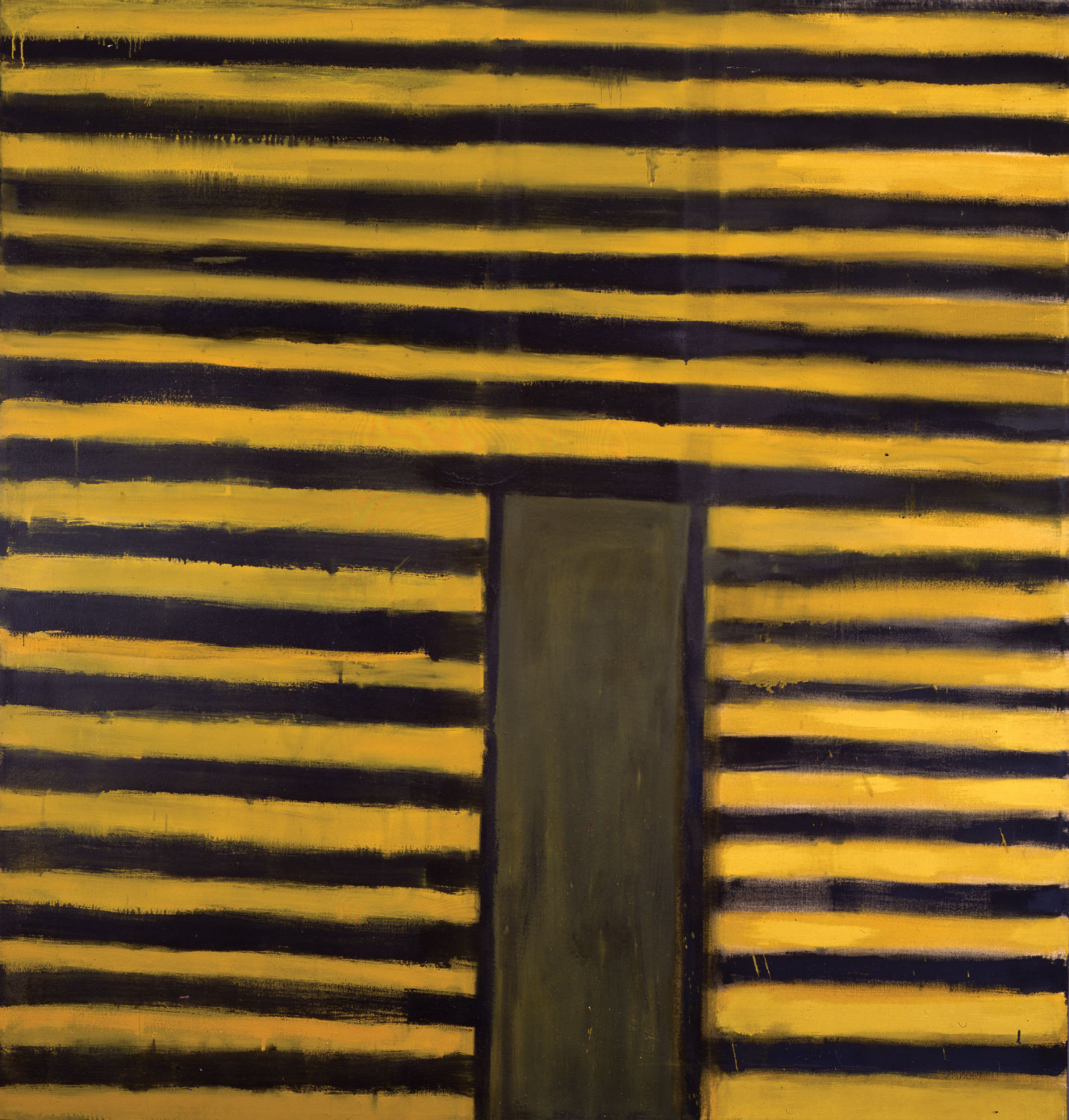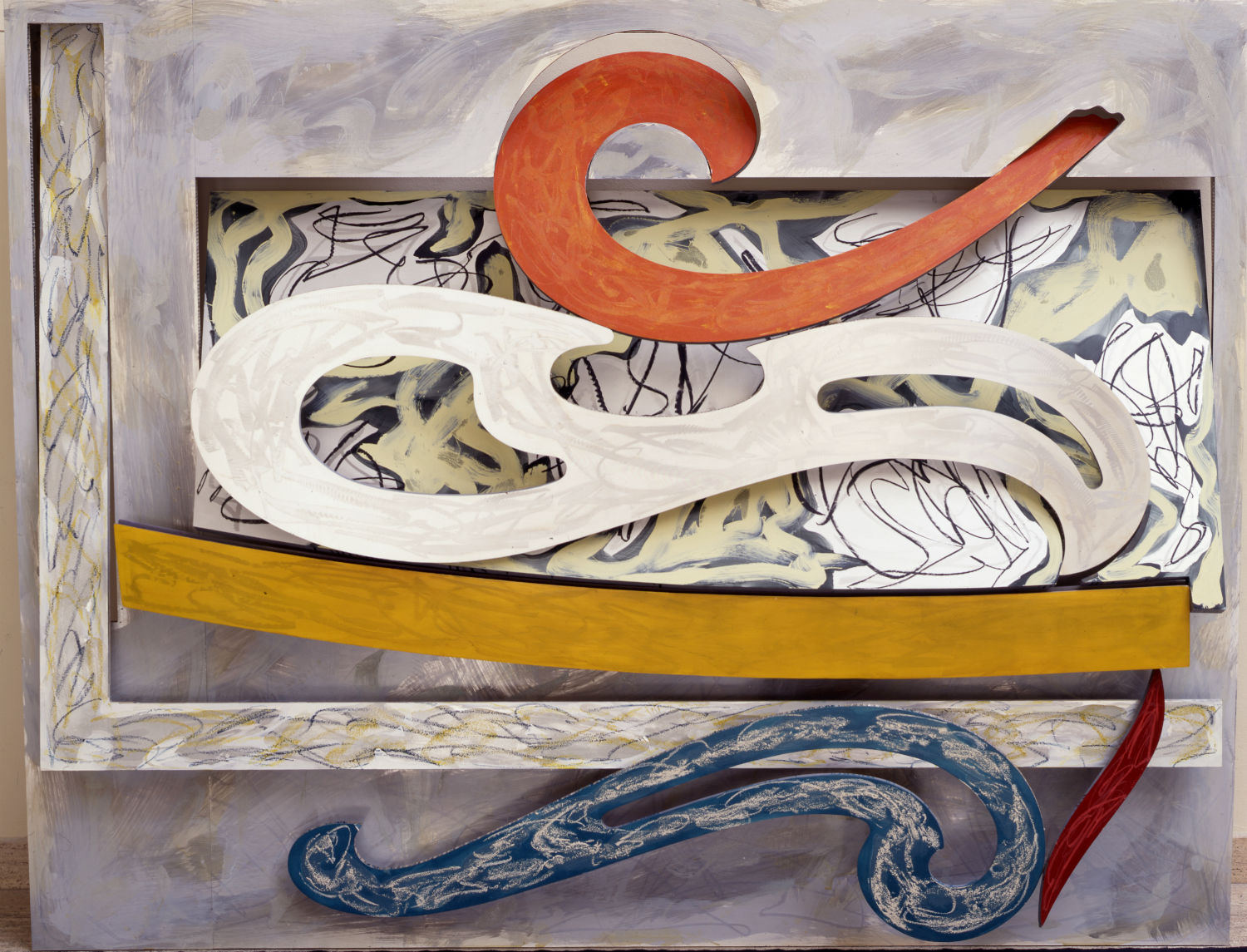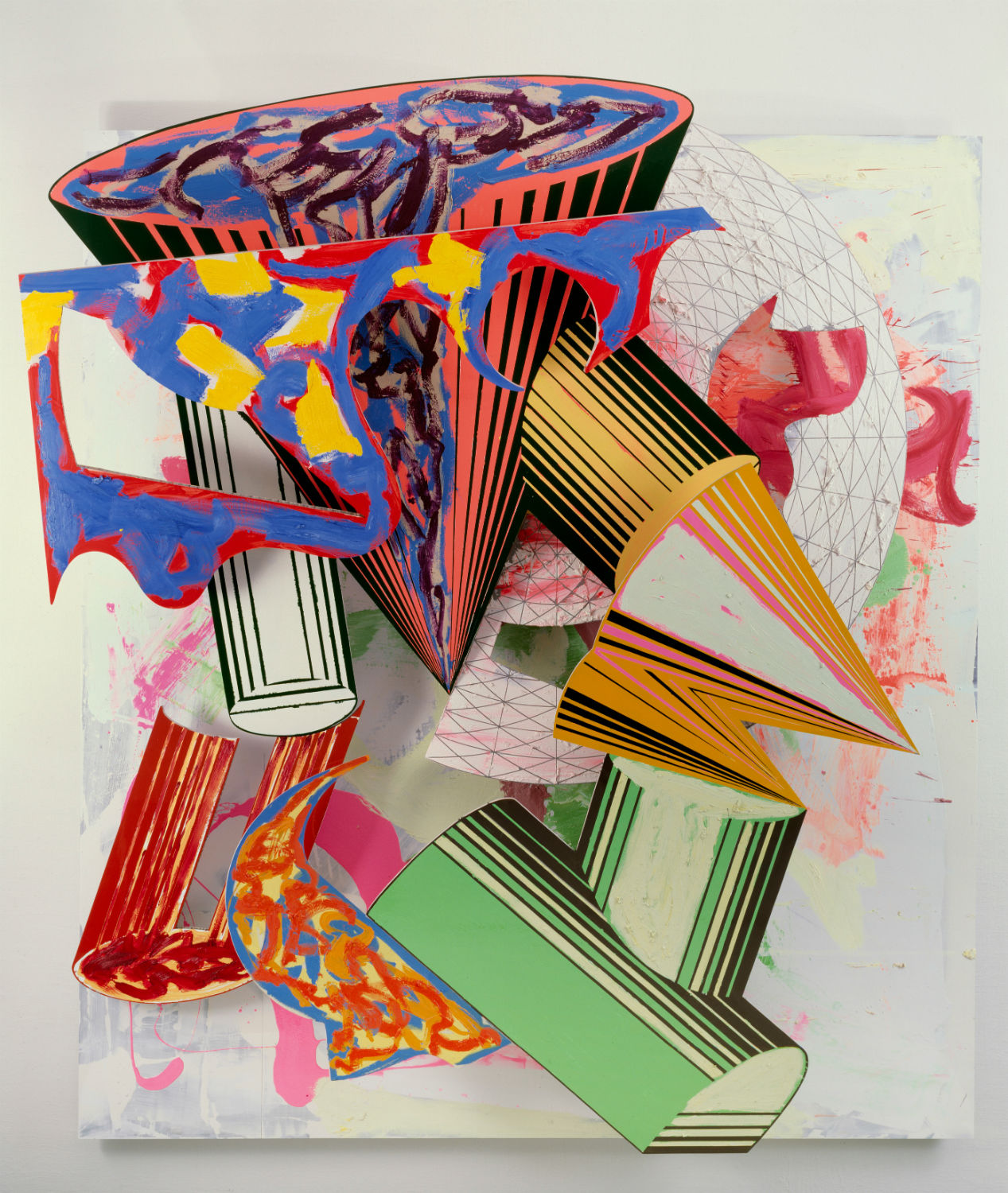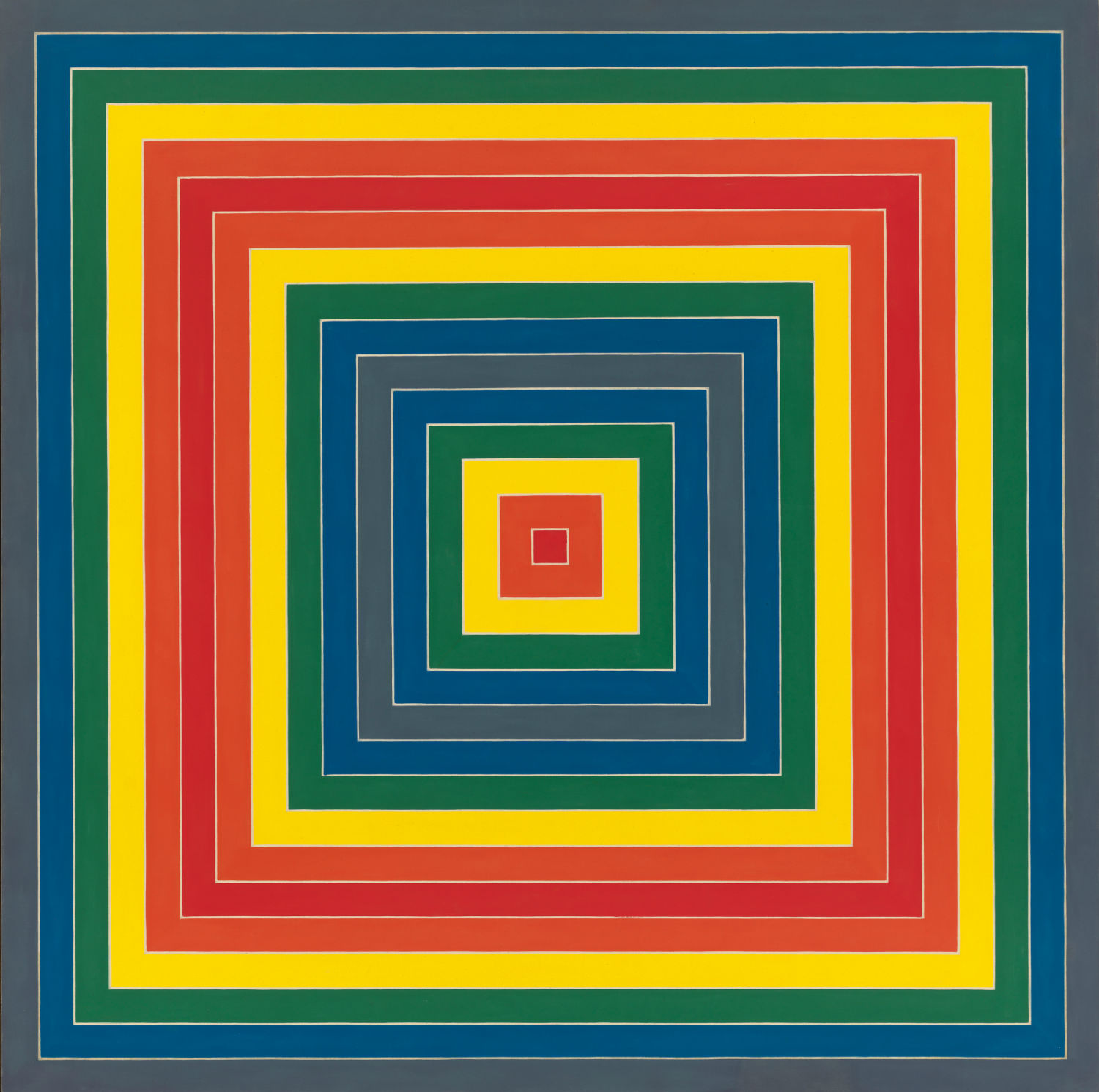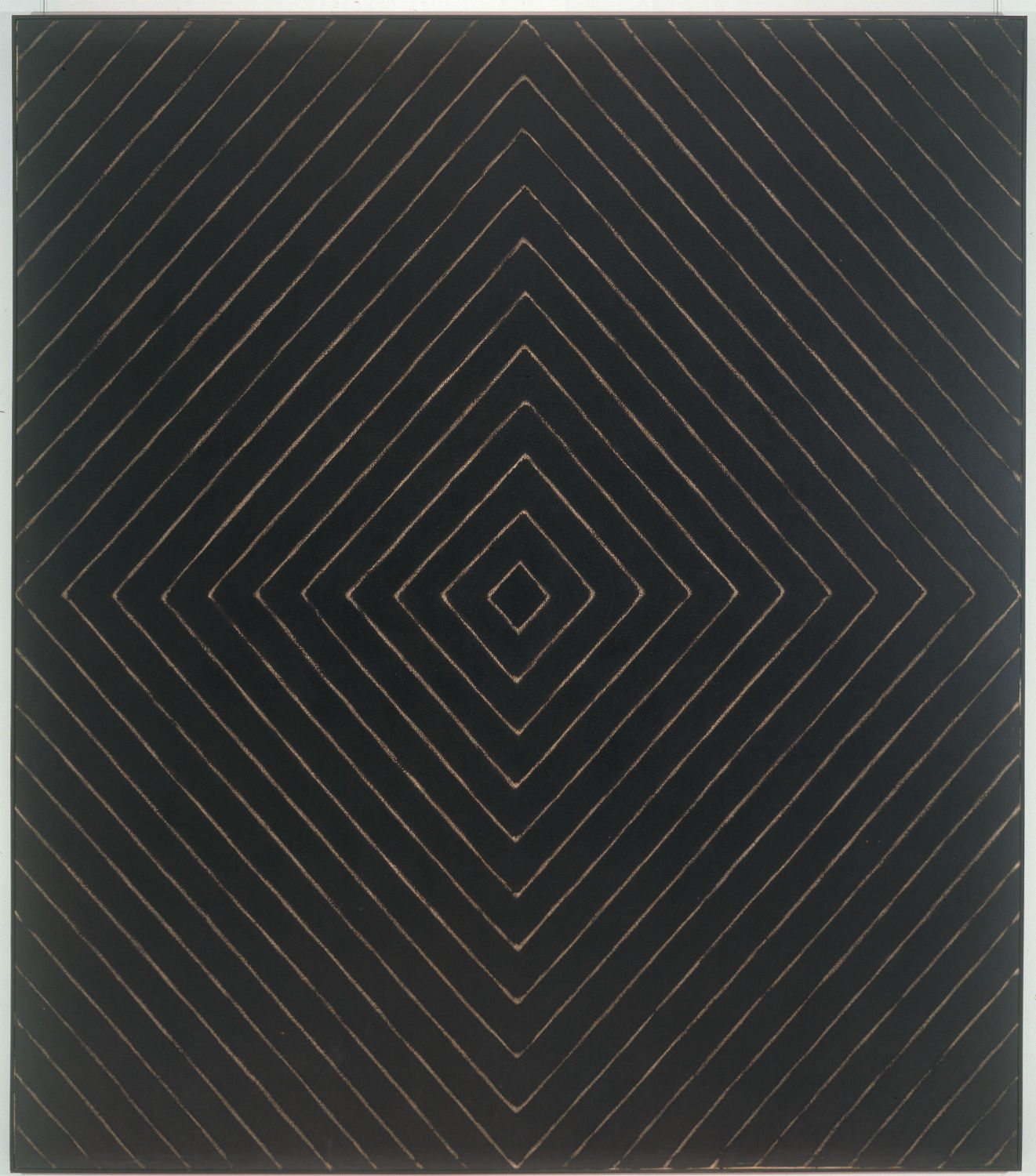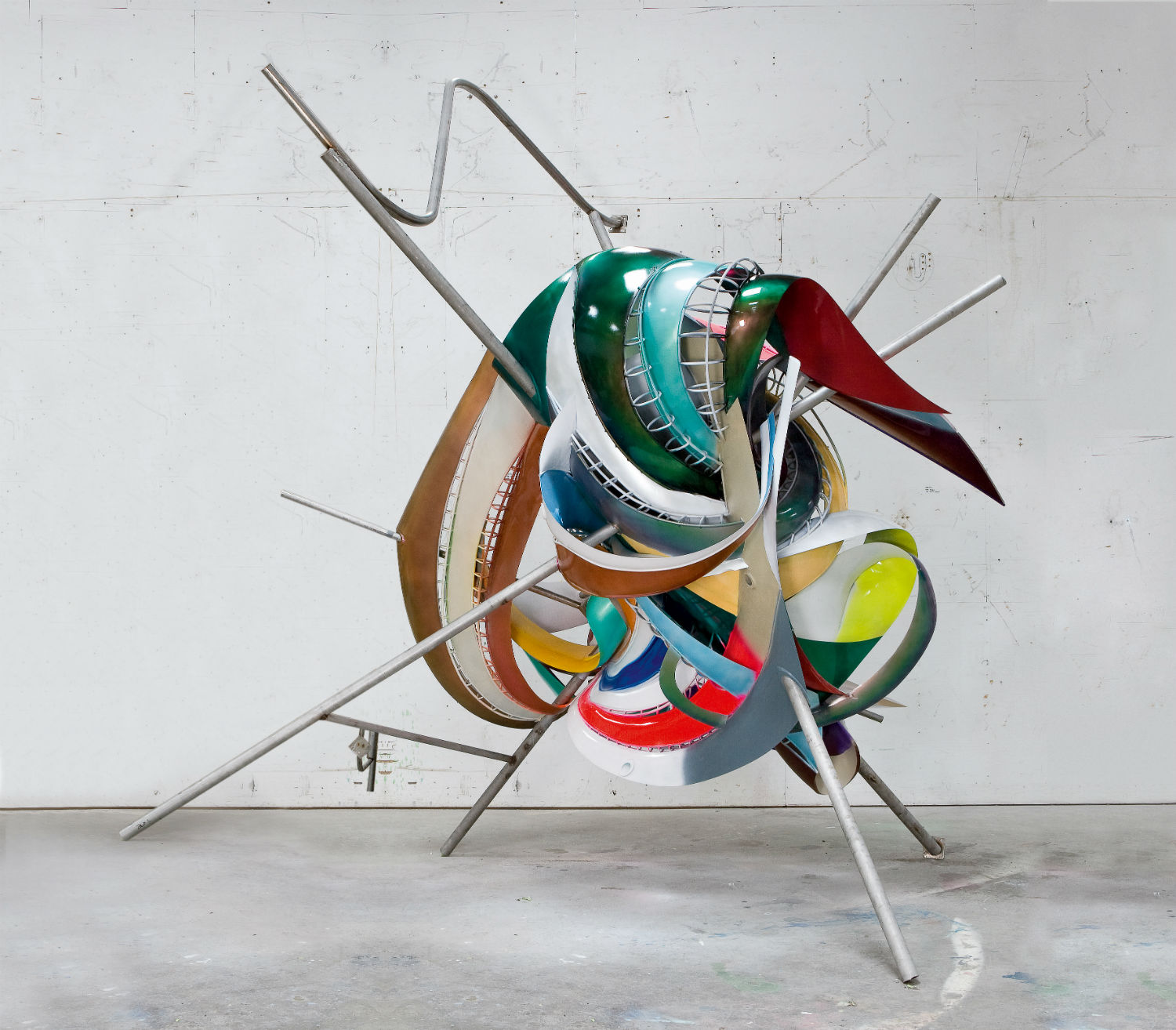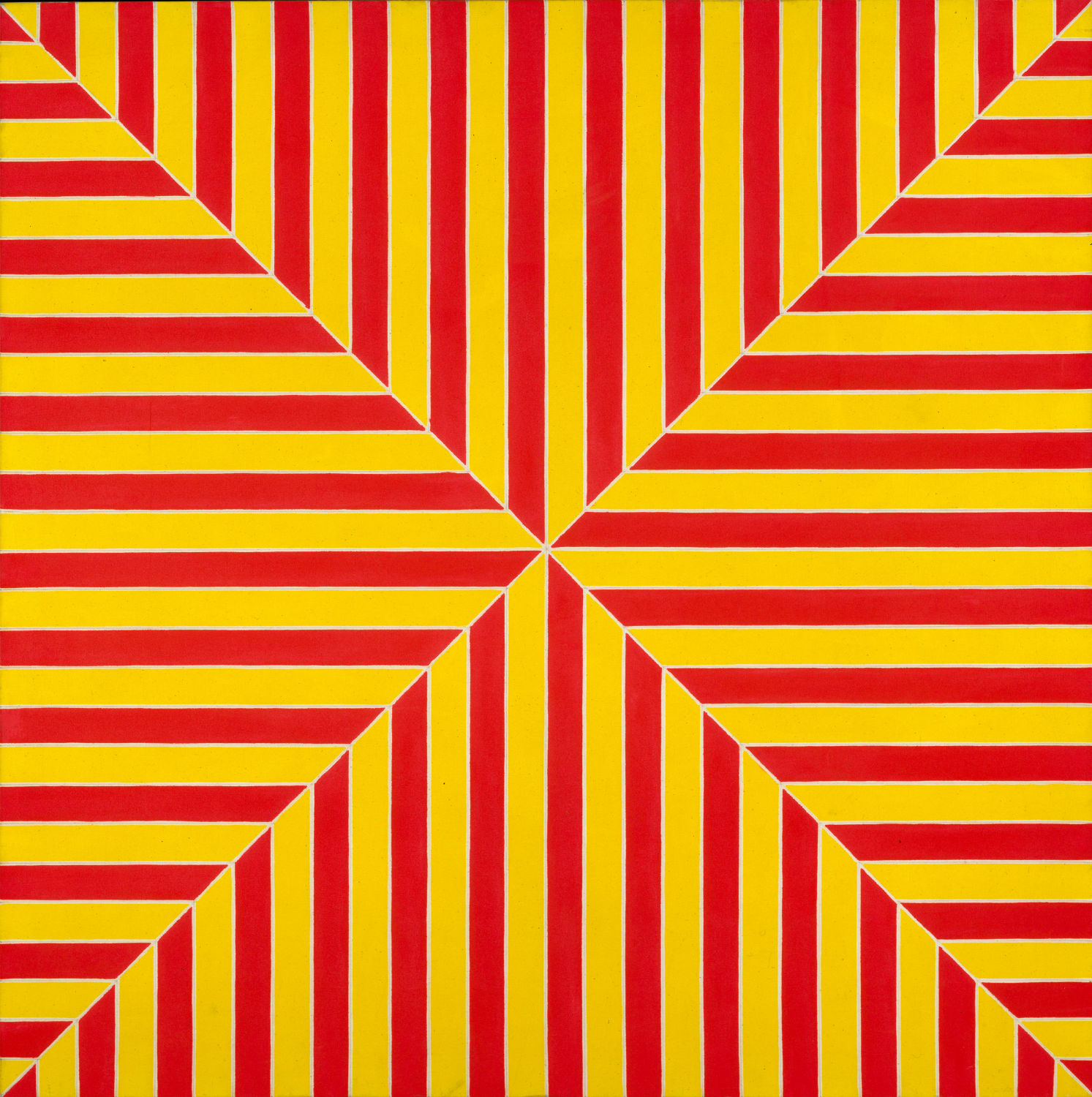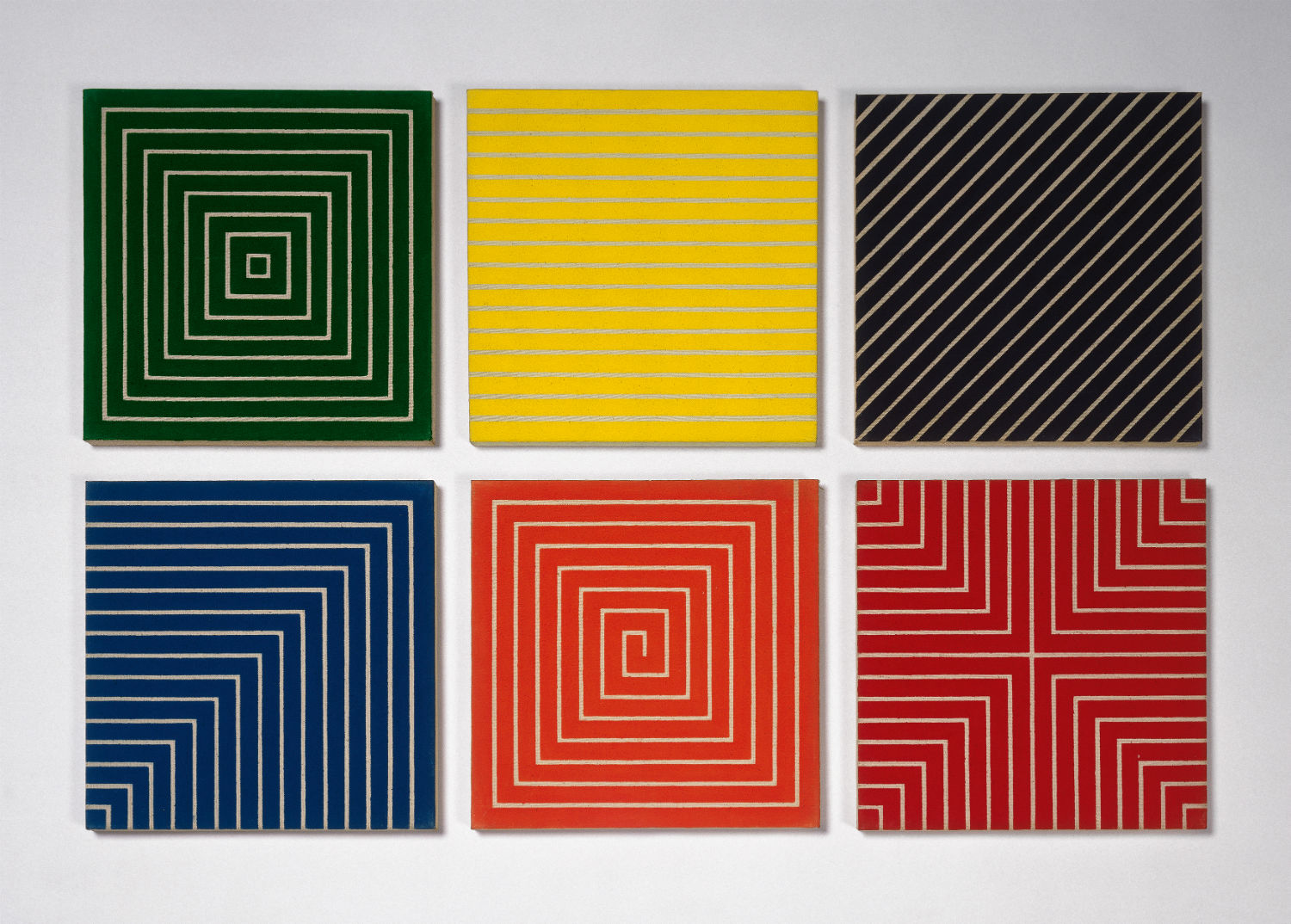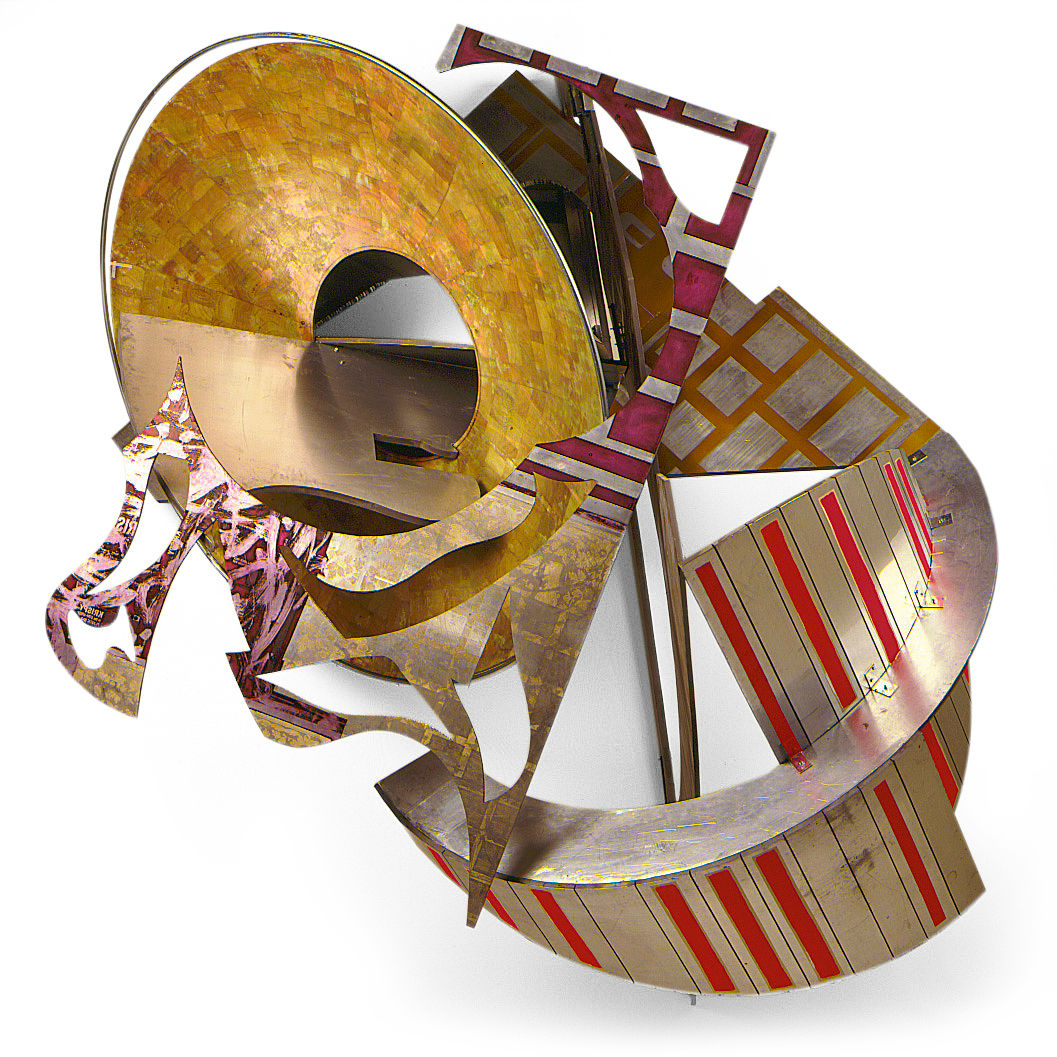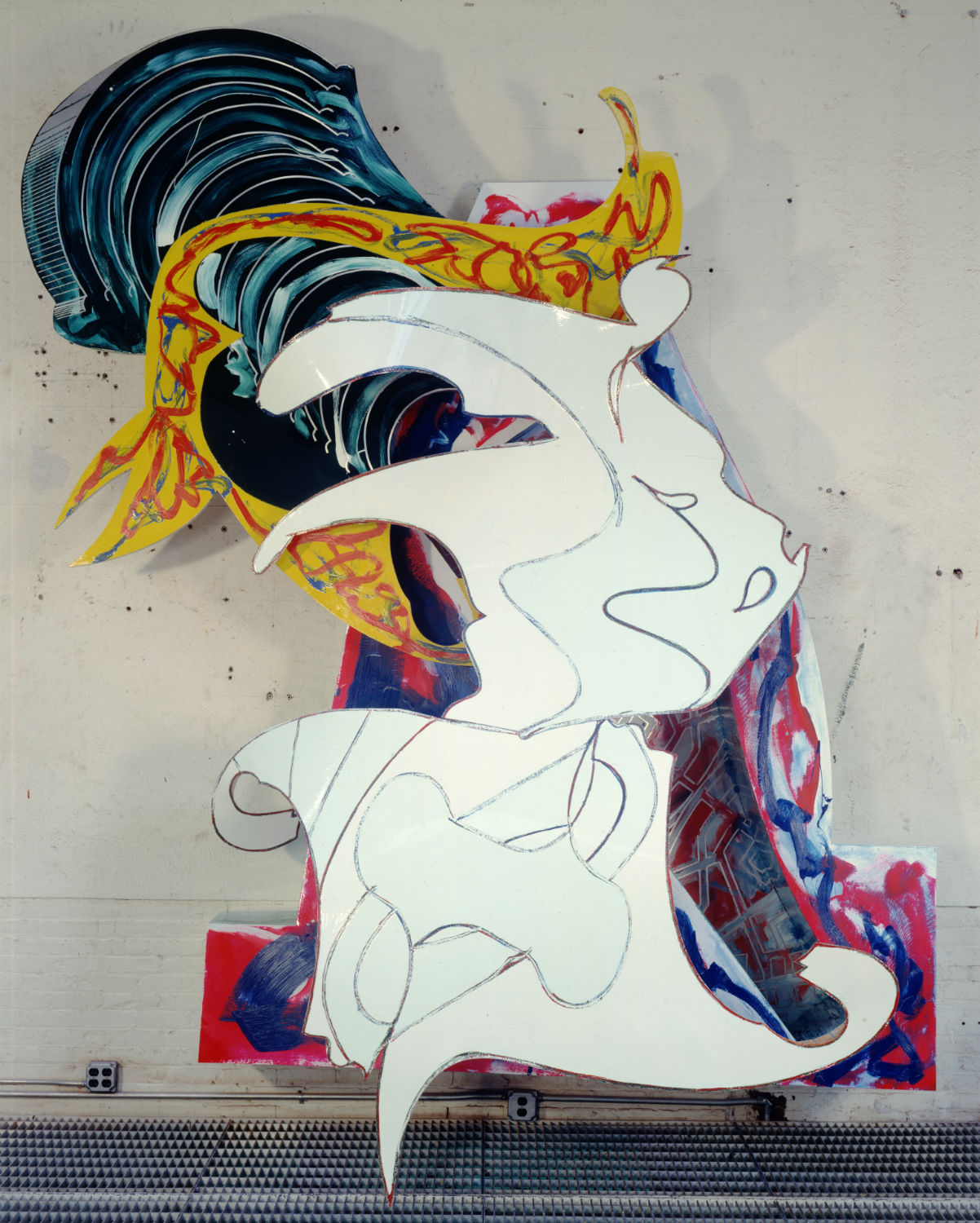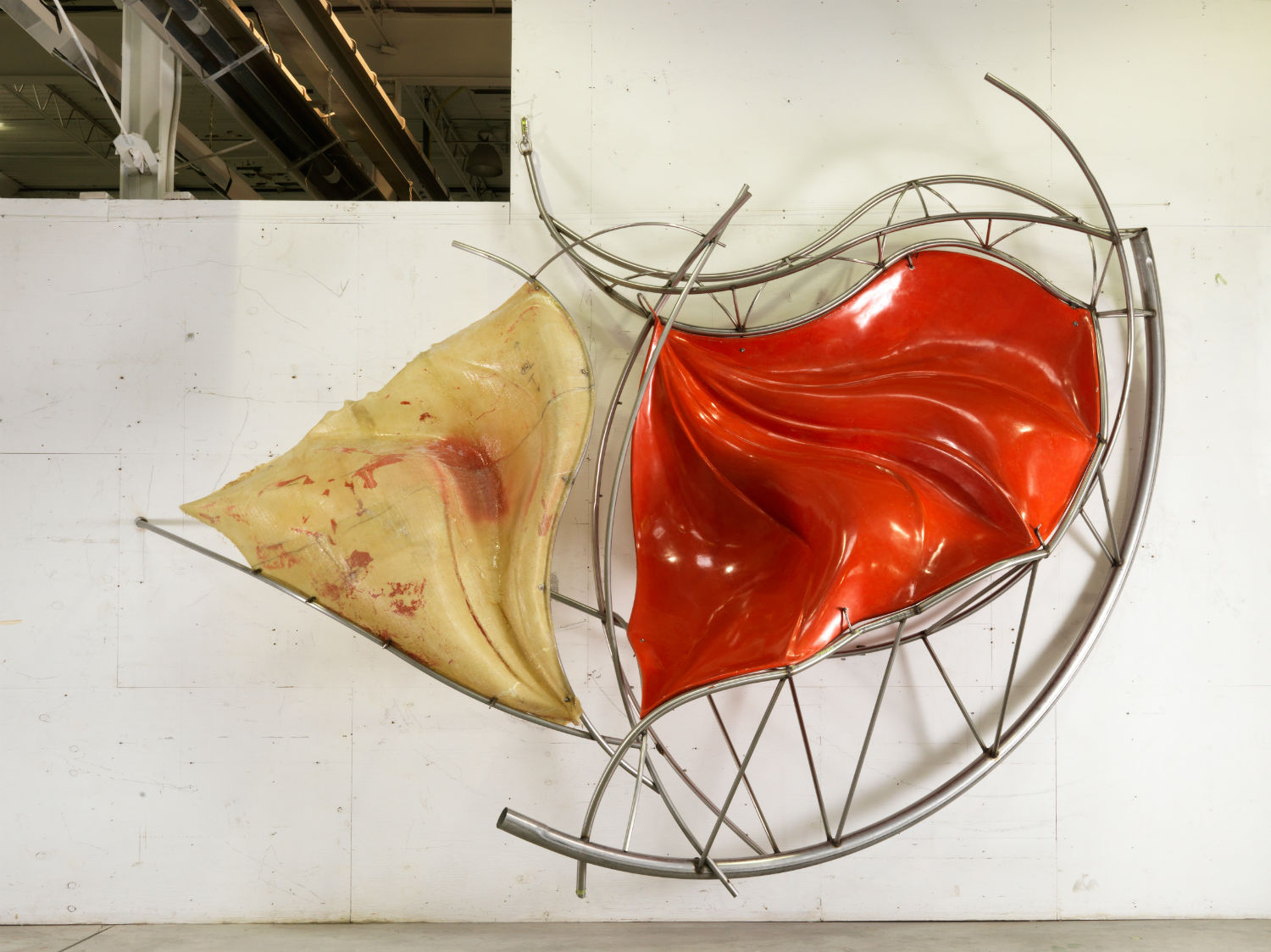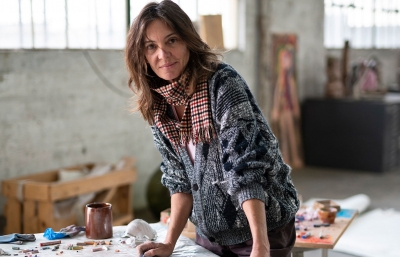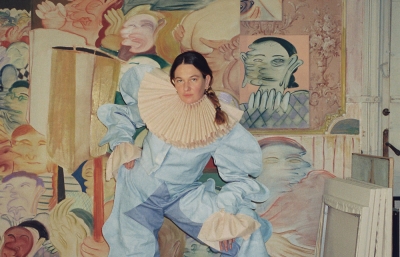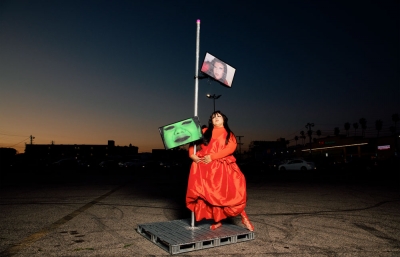“One learns about painting by looking at and imitating other painters. I can’t stress enough how important it is, if you are interested at all in painting, to look, and to look a great deal, at painting. There is no other way to find out about painting.” Excerpted from the artist’s 1960 lecture at Pratt Institute, this simple dictum personifies Frank Stella: deep, direct, and ready to work.
Although Juxtapoz is purportedly rooted in the so-called lowbrow or no-brow movement, it has always showcased the cutting edge. Meaning, whether or not the art is emerging, what we serve is en pointe. Like the brightest stars, Frank Stella goes way back, but continues to beam a brilliant light. We flipped through the pages of our magazine and identified several artists who had clearly taken his advice to heart and hand. It’s a pleasure to share their observations along with the work of this artist, whose retrospective travels from the Whitney Museum of American Art to San Francisco’s de Young Museum.
Read this feature and more in the December 2016 issue of Juxtapoz Magazine.
Bill Saylor
I used to walk by Frank Stella's studio on 13th Street in the ’90s a lot. It was in a beautiful, historic building once used for selling horses and carriages, and through the window, you could always see part of some giant project hanging from a beam on the ceiling, most likely one of his wall assemblages, which were huge, dense and layered. You could see these works around town in the lobbies of big buildings like some abnormal cell growth from the architecture itself.
At the time, I was working for Julian Schnabel and was more in his camp, as well as Polke, Beuys and Oehlen when it came to making things, but one day I did buy a copy of Stella's book, Working Space, which was based on some lectures he gave at Harvard in the 1960s.
There was something about the way he laid out the importance and history of painting space and composition, from Caravaggio, Malevich, Pollock and others, to random East Village graffiti, that had an impact on me.
Maybe it was some kind of validation of all that I was looking at, or it was the first book I read devoted entirely to the subject and consideration of composition—I'm not sure. And, in the end, my favorite quote from the book was, "If it’s not sexy, it’s not art."

"Harran II" Polymer and fluorescent polymer, paint on canvas, 1967.
Kristin Farr
The impact of Stella's pioneering approach to line, shape and color is particularly clear when you consider the trend towards Abstraction Expressionism that he was reacting to at the time he came up. Adding to a dialogue fleshed out by Josef Albers that centered the core of minimalism and the idea of color as a visceral instigator, Stella made bold moves with a simplicity so extreme it ruffled feathers. His famed Black Paintings were brave and shocked the art scene in a necessary way. He changed the game and opened new doors like only a few heavy hitters have done. Put it this way: he helped make post-modernism a thing 20 years before that term even existed. Stella was a king in the '60s art scene, and what is most admirable is that his reign never faded, and he continues to experiment in every direction.
In the eyes of a painter whose work is intrinsically color-related, Stella is a godfather. When I walk into a museum, his work pops out and calls to me from a distance, and my head snaps to attention. Sometimes I can't even look at Stella's work for too long—it's like staring into the sun. It's so attractive but almost too powerful to look at.
Sage Vaughn
I am a painter, therefore I feel I am qualified to look at paint dry... not much else. I have spent most of the last 15 years in the same room staring at a surface a few inches from my face, trying to make another composition of dried paint. I also love to uncover what other painters were contemplating when I look at their works of dried paint. To be honest, it makes me feel good. When I look over the course of Frank Stella’s career, which is still ongoing with impressive gusto and ingenuity, I like to think I see a long road towards what he once was trying to avoid: fun!
He begins with those Black Paintings—stark, serious paintings solemnly refusing the annoyingly flamboyant status quo of Abstract Expressionism. Think about how terrible it must have been to hear that painting/art is now this sloppy gestural fuck fest, spinning out of control on its own hype and personality. Don’t get me wrong—de Kooning, Rothko and Pollock are incredible! But like every wave in the history of art, there was probably a ton of hacks rising with the tide. Painting had just become about the artist, not the painting! Skill, talent and hard work is thrown out the door. Here comes a sensible dude from Massachusetts, Frank Stella, with some subtle ideas about aesthetics. He was able to bring it back to essential notions of observing an object, “What you see is what you see.” I love how this thought does not ignore the pleasurable aspects of seeing; works can be beautiful, enjoyable, and satisfying, but the focus is back on the canvas, not the guy standing next to it smoking a cigarette. He does this through a very serious self-limiting process.
Stella has noted, “I think I had been badly affected by... the romance of Abstract Expressionism... which was the idea of the 'artist as a terrifically sensitive ever-changing, ever-ambitious person’... I began to feel very strongly about finding a way that wasn't so wrapped up in the hullabaloo.”
It reminds me of Swoon’s work in the early 2000s. We had a major surge of graffiti in and around NYC, so many dudes writing their nicknames all over the place... different styles, different colors, different places. And here comes this wonderful lady who kills them all with a fucking snowflake! She outdoes all the posturing with paper cutouts that disintegrate right before our eyes. I don’t care how many times BOBO 2 DOPE from SWV gets up around the city, I just want to see something new... and she did it, she did it the same way Stella put the death nail in the AbEx coffin: with pure efficiency.

"Das Erdbeben in Chili [N#3] (The Earthquake in Chile)," Acrylic on canvas, 1999
Mary Iverson
Frank Stella is one of my main influences. For me, the most powerful aspect of his work is that he wrote his own rules for what painting should be. Historically, painting followed this particular formula: start with an idea, work it through sketches, do a line drawing onto a stretched canvas using pencil or chalk, paint over top of the drawing using brushes, give it a coat of varnish, and then it’s done. Those were the rules about painting that were followed from the Old Masters up through Surrealism. Beginning with Dada, however, modern artists have asked which parts of this formula really matter to them. What can we do away with and still have the end product be considered a painting?
At a certain point in my trajectory as a painter, I reached a place where my work was not resonating with me at all. That’s when I began looking at Frank Stella and exploring the modern notion that we can make our own rules about what a painting is and how it must be constructed. For Stella, this meant dismantling the canvas itself, and using two-by-fours, the raw materials for stretcher bars, to create imagery. Traditionally, we don’t see those materials because they are concealed beneath the canvas. Dismantling this, and using an actual two-by-four as a measuring stick, he created a new formula for himself: draw parallel lines at four-inch intervals inward from the edges of the canvas in concentric bands until you reach the center. This simple rule has led him through a lifetime of rich exploration. Inspired by him, I wrote a rule of my own: reverse the painting and drawing layers so that the perspective lines are on top, slicing through the imagery and marring the precious surface illusion. This simple concept has led me through years of experimentation, and I don’t see an end to the ideas that it generates. Thank you, Frank Stella!
Cody Hudson
I’m really not much of a writer; I’ve always been much more comfortable expressing myself in a visual way. But when Juxtapoz asked me to write a few words on Frank Stella, it was a hard one to turn down. The Stella work from the 1950s, ’60s and ’70s to this day are among my favorite works to see in person. There is an honesty in the work that really resonates with me, not only in the materials, but in how they are applied. His early use of house paint on the Black Paintings, to his exploration in bold colors and circular patterns later on has been an inspiration on so many levels to a generation of artists. There is an instant feeling I get in my mind and body when standing in front of one of the massive works, almost a goosebump-like tingle that happens in your body that you don’t have control over. To have that feeling happen based on something as simple as shapes, lines, color and lack of color is a very powerful effect. Seeing those early paintings will always bring a little joy to my day.

"Jasper’s Dilemma," Alkyd on canvas, 1962
POSE/Jordan Nickel
All too often I walk into a museum and see an artist’s work as a motionless piece of institutional art and art history, one that has always existed exactly this way. Further, the more powerful and effective an artist was in advancing art history during their career, the more our contextual amnesia kicks in. Such is the case with Frank Stella. From an incredibly early age, he fearlessly bucked the norm, turned everything that was popular at the time completely on its head,
and changed the way we view painting and, most importantly, the way we think about it. Seeing Stella’s tireless pursuit of his vision, as well as his artistic lawlessness, is a constant source of inspiration. Here’s a quote from him that has always mentored me: “Making art is complicated because the categories are always changing. You just have to make your own art, and whatever categories it falls into will come later.”
Josh Jefferson
Frank Stella’s importance as an artist is rooted in the fundamental shift we viewers had to make to “see” his paintings. In his approach to creating his shaped canvases in the late ’60s, there is no immediate or apparent understanding of how the piece is made. In a certain sense, the first thing is that you “see it” and not how it’s done. This is important. The painting idea becomes a presentation, not interpretation. This is a major shift on how we view and understand works of contemporary art. Frank Stella helped create this new minimal language.

"Talladega," Alkyd and magna on etched magnesium, 1980.
Sarah Cain
An inappropriate fantasy of my own is to be able to look at a Stella right after sex. It seems like a natural double-up of ecstasy. His work makes me blissed out. Even the ugly, loud ones just plow me down with excitement. The very first museum essay on my work started off by comparing me to a young Frank Stella. At the time, I didn’t really know what the curator meant, but over the years, I’ve realized it was one of the highest compliments. Stella is freedom, risk, speed, chaos, order, and explosively beautiful color. His color choices are a go-to reference point for me when people use gendering terminology to categorize other painters’ colors in a way that gets me riled up. He uses every color with equal joy. I also think of Stella as a great example to keep pushing and to not go stagnant once you’ve hit on a market-friendly form of working.
Richard Colman
I love Frank Stella's paintings. His work has that very special effect that when you are looking at one, everything else just sort of falls away, the works around it, the space it's in, the other people there with you, everything. I always get lost in them, fully captivated by their subtlety and undeniable power. His works have that kind of presence where you tend to forget that someone made it. They can seem almost otherworldly, but then you start to see the subtle variations in the colors, or the surface, or when you get up close, you may find the occasional pencil line, and that's such a great thing.
----
Originally published in the December 2016 issue of Juxtapoz Magazine, on newsstands worldwide and in our web store.

